Title
Traditional CouturePosted in
BookEditor
Robert Klanten, Gregor Hohenberg, Annet HohenbergRelease Date
April 2015Publisher
Gestalten VerlagFormat
24.5 × 33 cmISBN
978-3-89955-572-1Price
€49.90 / $68.00 / £45.00More Info
Features:
Full color, hardcover, 320 pages
Language:
English
| Detailed Information | |||||
|---|---|---|---|---|---|
| Title | Traditional Couture | Posted in | Book | Editor | Robert Klanten, Gregor Hohenberg, Annet Hohenberg |
| Release Date | April 2015 | Publisher | Gestalten Verlag | Format | 24.5 × 33 cm |
| ISBN | 978-3-89955-572-1 | Price | €49.90 / $68.00 / £45.00 | More Info | Features: Language: |
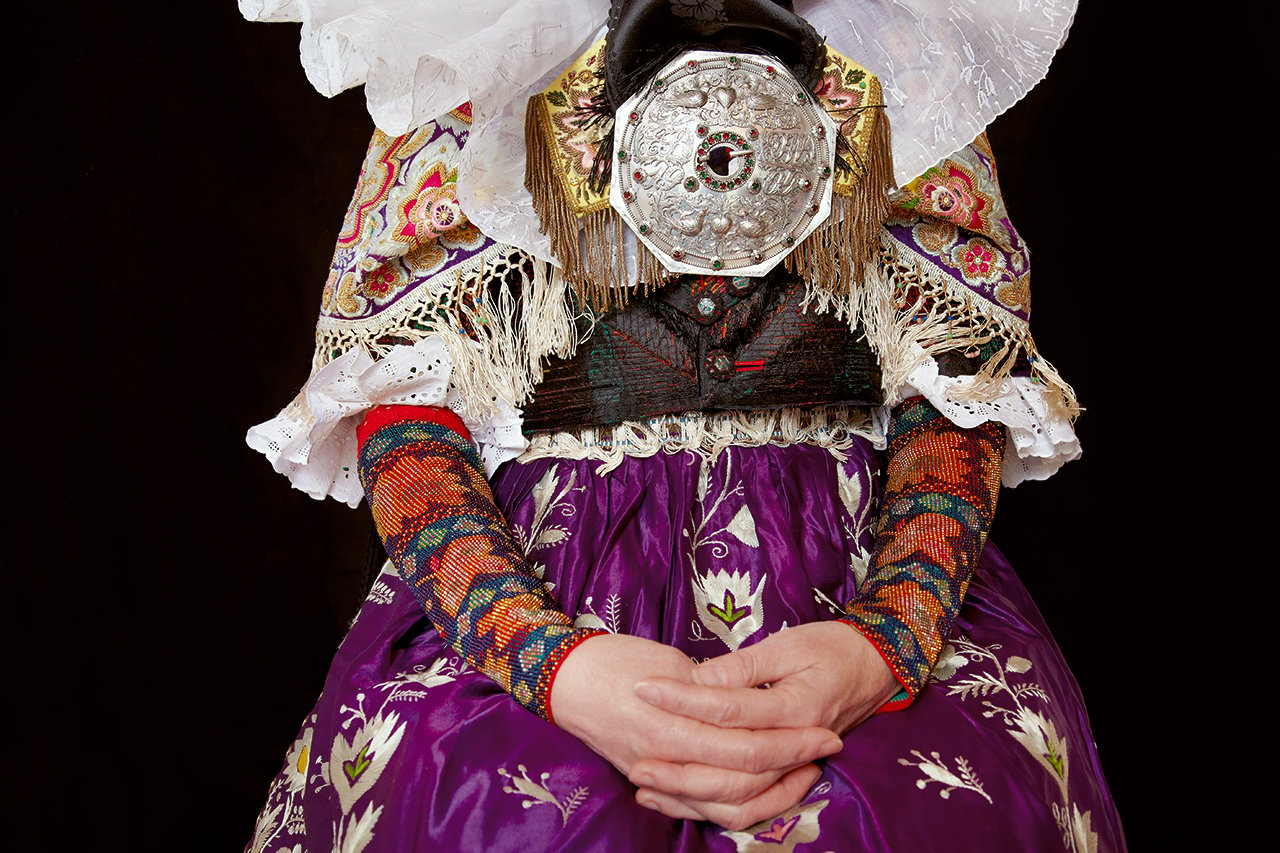
Österte-Tracht
Lower Saxony, Horsten
Photo by Gregor Hohenberg
from 'Traditional Couture'
© Gestalten 2015.
The 320 page book showcases different trachten (the word tracht deriving from the Middle High German word dracht, meaning “what is worn”), costumes that are essentially story-telling artworks. In a country where no one expects to find such a rich fashion tradition, the trachten surprise us with their high-quality fabrics and elaborate workmanship, their designs completely unaffected by the seasonal influences of the fashion industry. These outfits were made to last a lifetime and some of their details are so elaborately made that hardly anyone has the time or skill to create them today.
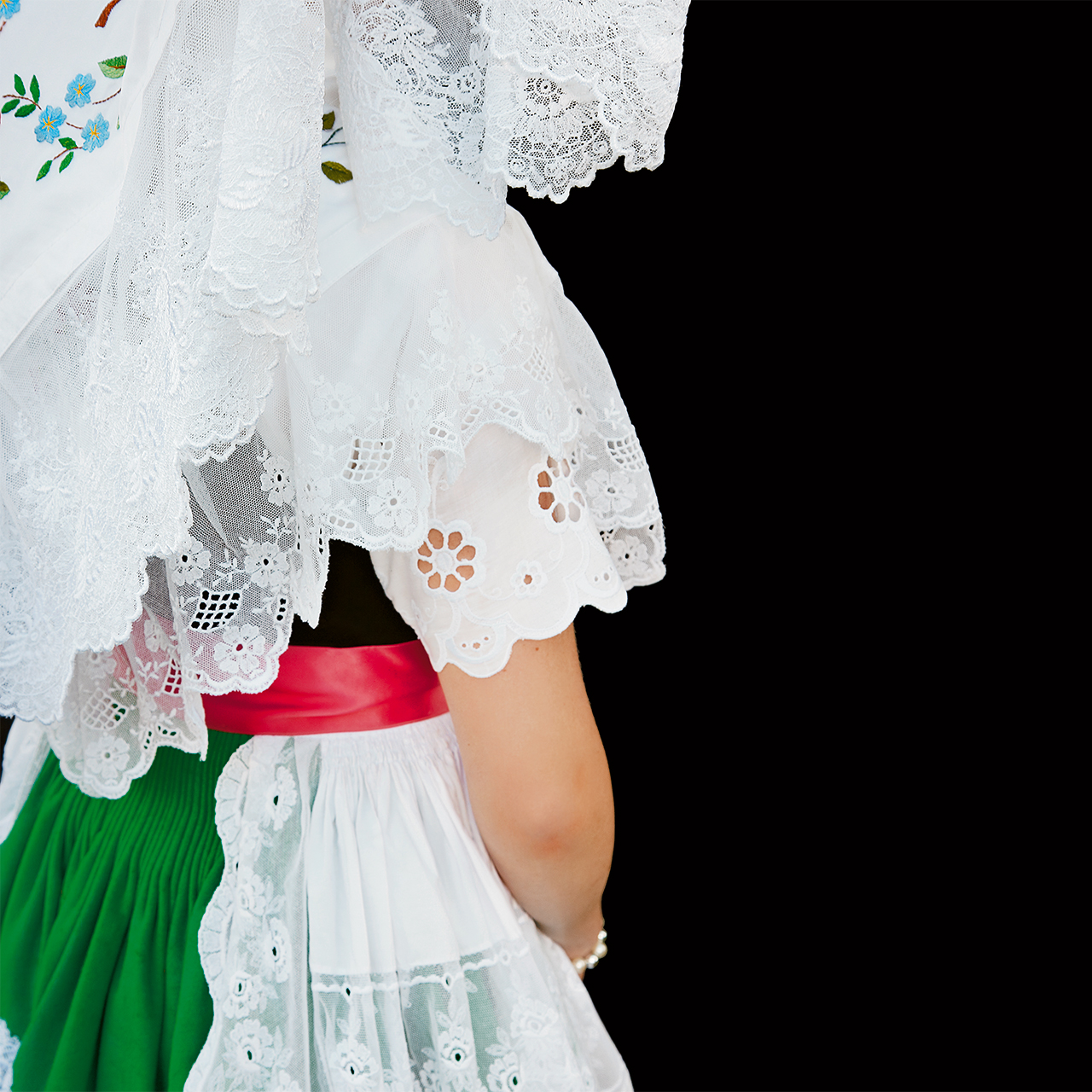
Burger Tracht
Spree Forest, Burg
Photo by Gregor Hohenberg
from 'Traditional Couture'
© Gestalten 2015.
As he travelled through the Black Forest region, Hohenberg documented the Bollenhut, a headdress with red pompoms, while in Bad Nenndorf, he discovered a wedding costume with a headpiece entirely studded with glass beads. But what steals the show in the pages of this interesting collection is the impressive wedding Schäppel, a giant virgin crown that weighs up to six pounds and is full of pearls, glass beads, threaded silver platelets, fertility symbols made of brass, and mirror disks to ward off the evil eye.
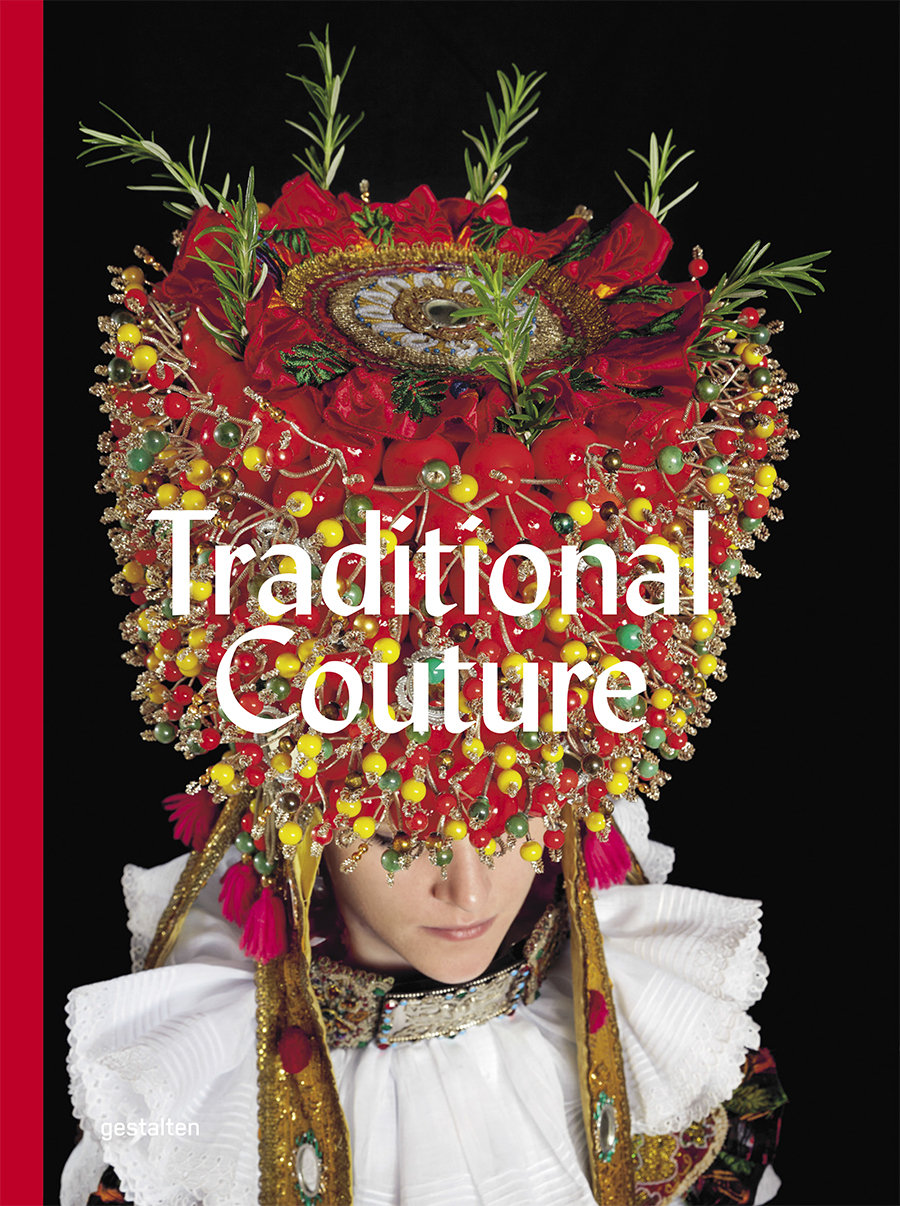
'Traditional Couture'
Book Cover
© Gestalten 2015.
In an age when the most radical fashion designers look to the past to find inspiration, folkloric clothing stands out as high fashion on its own, worn with the grace and dignity uniquely captured in Traditional Couture. In fact, what is most compelling about the way Hohenberg sees his country’s folklore is that the trachten are not worn with nostalgia but with contemporary charm and assertiveness. During an exchange we had with the photographer himself on the occasion of this review, we took the opportunity to ask him a few questions:
Q: What is the difference between shooting models in fashion and real people, specifically in these clothes?
A: There are a lot of similarities between photographing fashion models and photographing real people wearing traditional clothes. In both cases the garment is a means of showing a certain identity, a kind of nonverbal language with codes that can be read by the viewer. It is about beauty and about catching the attention of the surrounding environment. For this project, I tried to photograph the “real” people as though I was shooting a fashion editorial in order to show how timeless these costumes still are and to demonstrate that they could be easily worn nowadays, too.

Gutachtaler Tracht
Black Forest, Gutachttal
Photo by Gregor Hohenberg
from 'Traditional Couture'
© Gestalten 2015.
Q: Did the people that you photographed change when wearing these costumes?
A: Putting on the traditional costumes had an interesting effect on the people I photographed; it was like a transformation into another character, like they were playing a different role. They looked great and dignified, almost as if they were carrying all the old heritage of their culture with the costume.
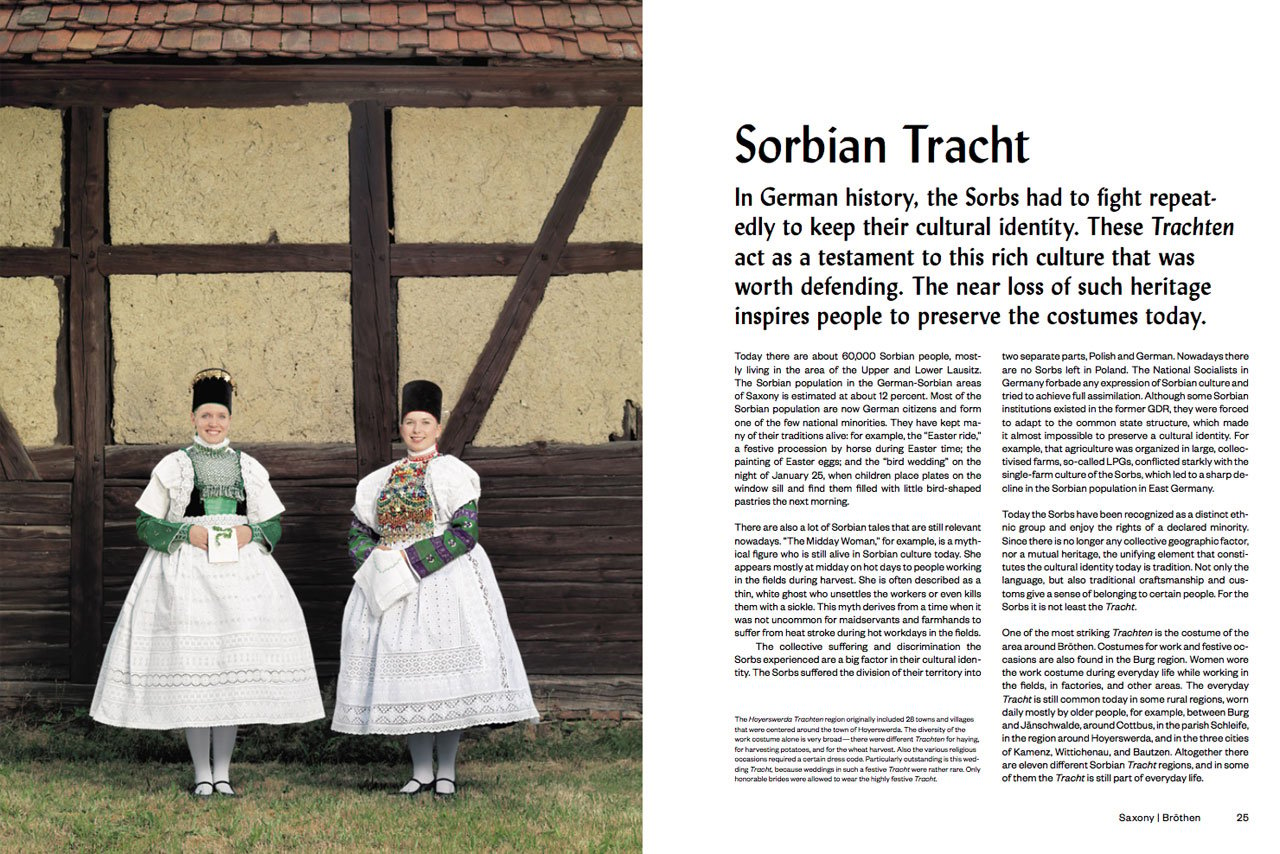
Sorbian Tracht
Saxony, Bröthen
Photo by Gregor Hohenberg
from 'Traditional Couture'
© Gestalten 2015.
Q: How much does the environment affect the style of the clothes?
A: Some of them are influenced by their environment in a very direct way, like the costumes of the fishermen on Rügen, an island in the Baltic Sea, because they also went fishing in their bulky trousers made of white linen. Other influences are more cultural—there are differences between Catholic and Protestant areas and between wealthier and poorer areas.
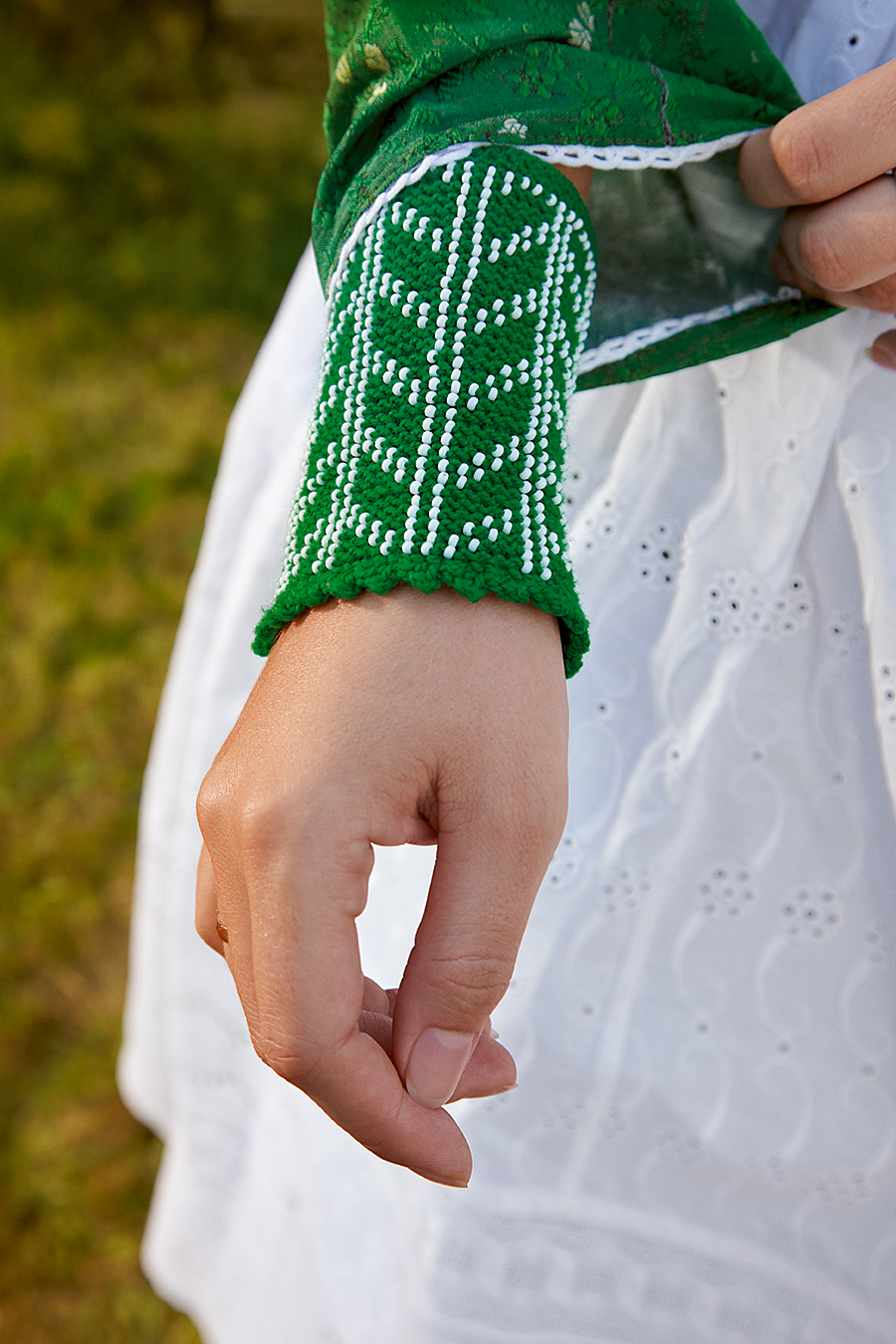
Sorbian Tracht
Saxony, Bröthen
Photo by Gregor Hohenberg
from 'Traditional Couture'
© Gestalten 2015.
Q: Is that why you wanted to depict them in their habitat, in the country?
A: It was very important for us to show the people wearing the costumes in their natural or native environment, to show how deeply the region is connected to the clothing. For instance, in regions where the soil wasn’t very fertile and the climate was rough and hard, the costumes were also simpler in appearance. They could only use materials that could be found very close to their homes or that they could trade for (like pieces of amber). We wanted to tell a story not just about the garments, the patterns, etc., but also about the countries where they first arose.
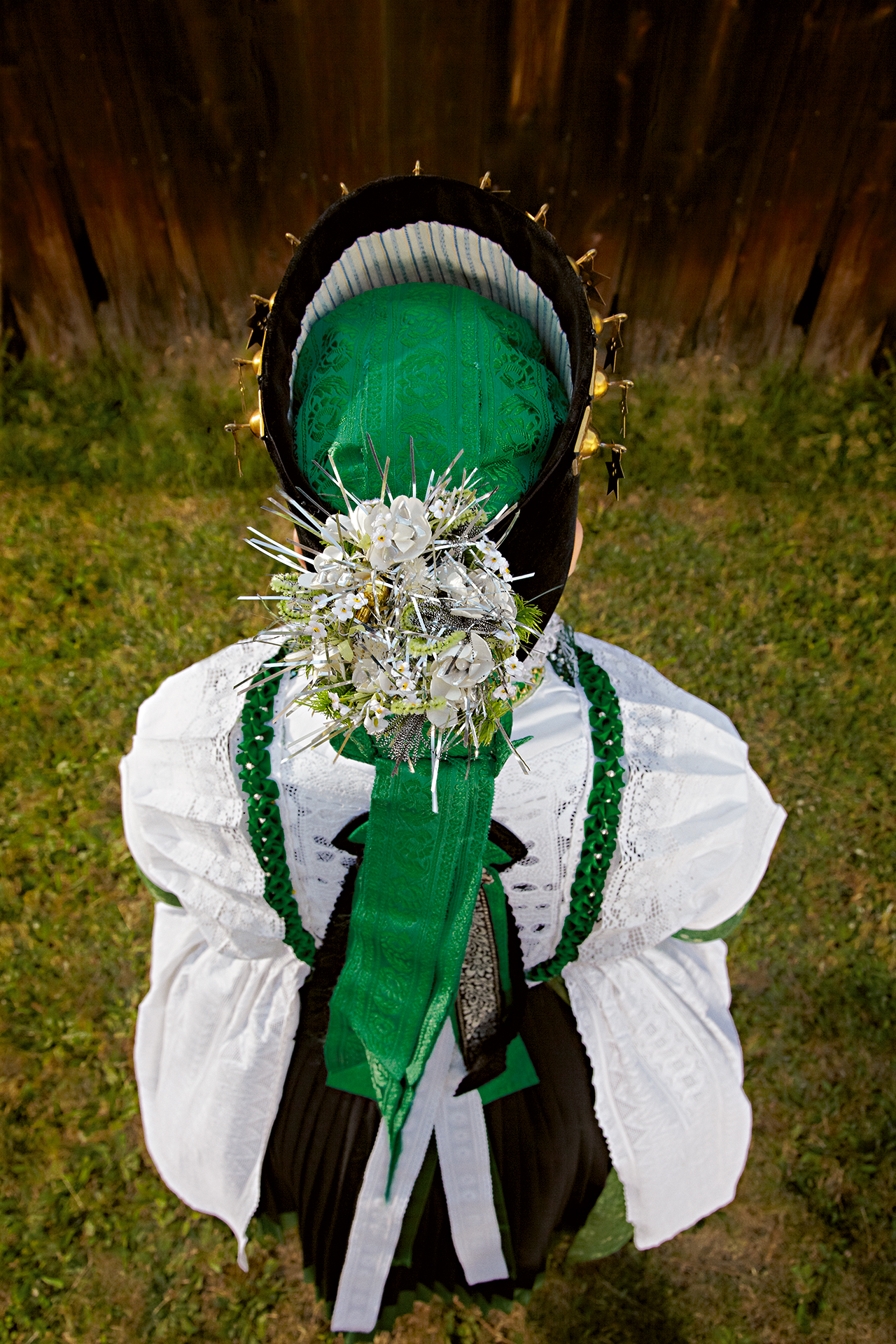
Sorbian Tracht
Saxony, Bröthen
Photo by Gregor Hohenberg
from 'Traditional Couture'
© Gestalten 2015.
Q: Would you say, after photographing them that these so-called “ethnic” costumes have more to do with influences from neighbouring countries than with a strong, German identity?
A: Yes, definitely. I learned that 150 years ago, when most of these clothes were coming into being, a vivid cultural and commercial exchange already existed throughout Europe, one that was much more intense than we had anticipated. You can find many elements from other cultures in traditional German costumes, like exotic feathers in men’s hats worn in the Berchtesgaden Tract of Bavaria, or Portuguese jewellery worn by the young women of Arum, an island in the North Sea.
I also believe that people were well-informed about fashion in Europe in the late 19th century. The costumes are very much influenced by the fashions of Paris and Berlin, but also by the cultures of Holland and Eastern Europe, and by Portugal and Spain. It’s like an eclectic mix of many influences, and sometimes a result of the vivid imagination of some local cutters as well. The costumes show how international Europe already was at that time.
Q: How close are these clothes to haute couture?
A: Very close—they are handmade couture with very highly developed craftsmanship using a wide variety of techniques and materials. They were also always influenced by the fashion of the time. These costumes can be very expensive, we can almost compare them to haute couture. An entire costume can cost up to €30,000.
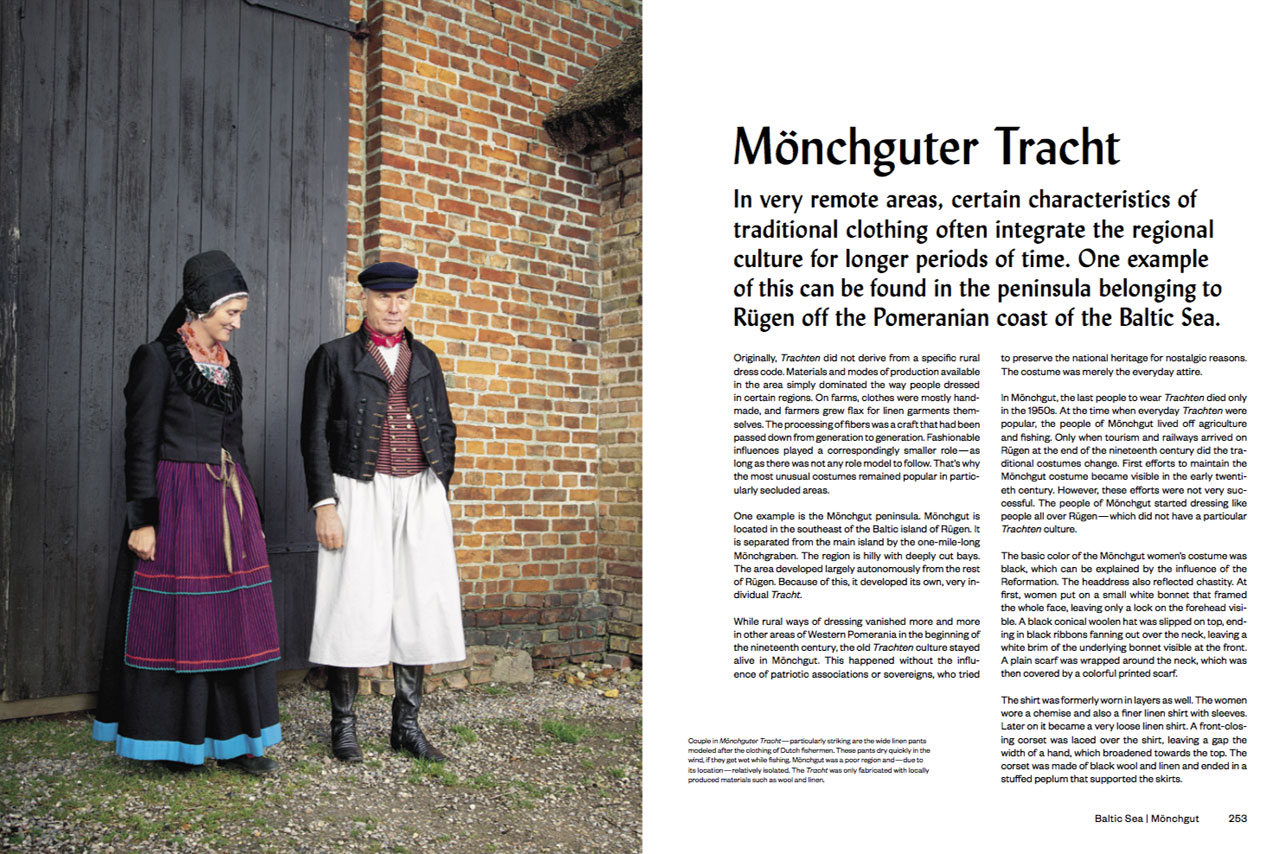
Mönchguter Tracht
Baltic Sea, Mönchgut
Photo by Gregor Hohenberg
from 'Traditional Couture'
© Gestalten 2015.

Mönchguter Tracht
Baltic Sea, Mönchgut
Photo by Gregor Hohenberg
from 'Traditional Couture'
© Gestalten 2015.
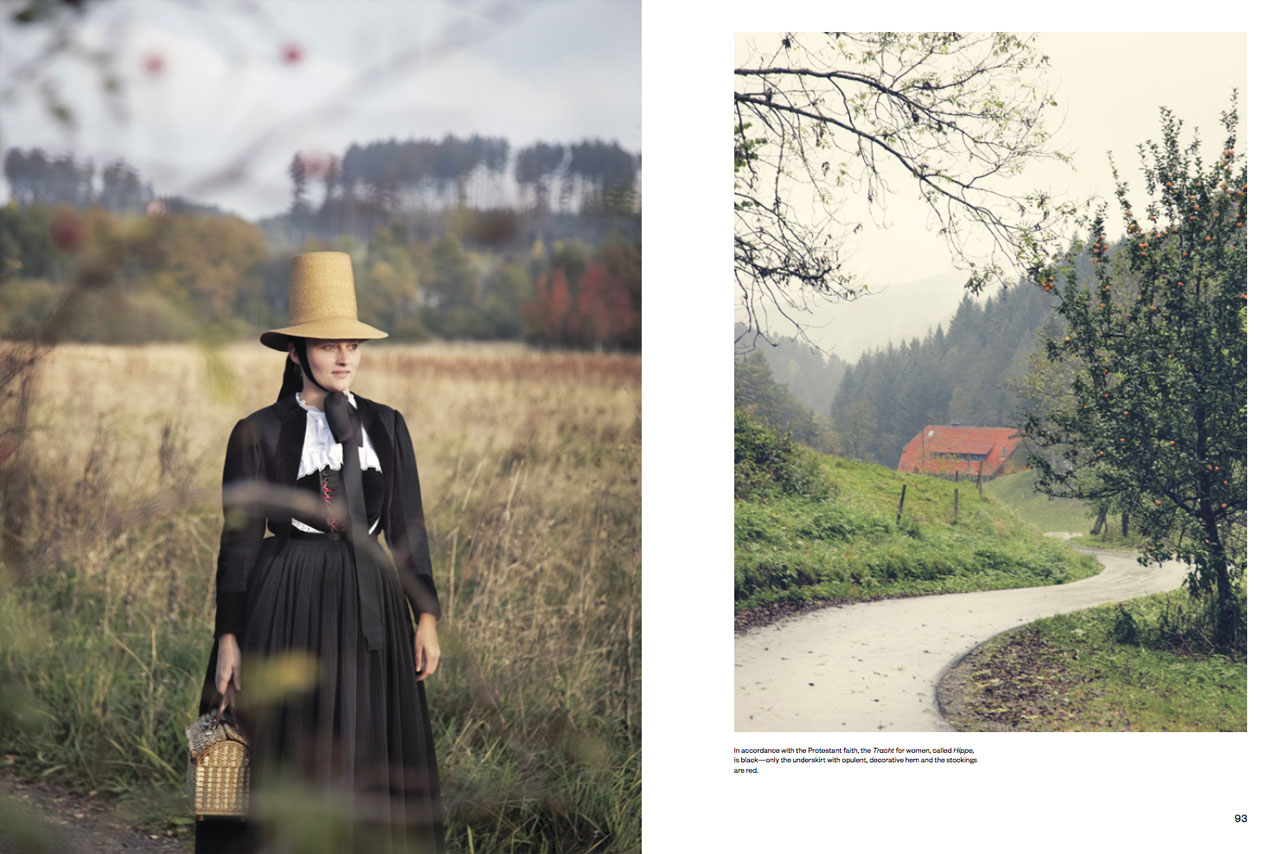
Schwenninger Tracht
Black Forest and Baal, Schwenningen
Photo by Gregor Hohenberg
from 'Traditional Couture'
© Gestalten 2015.
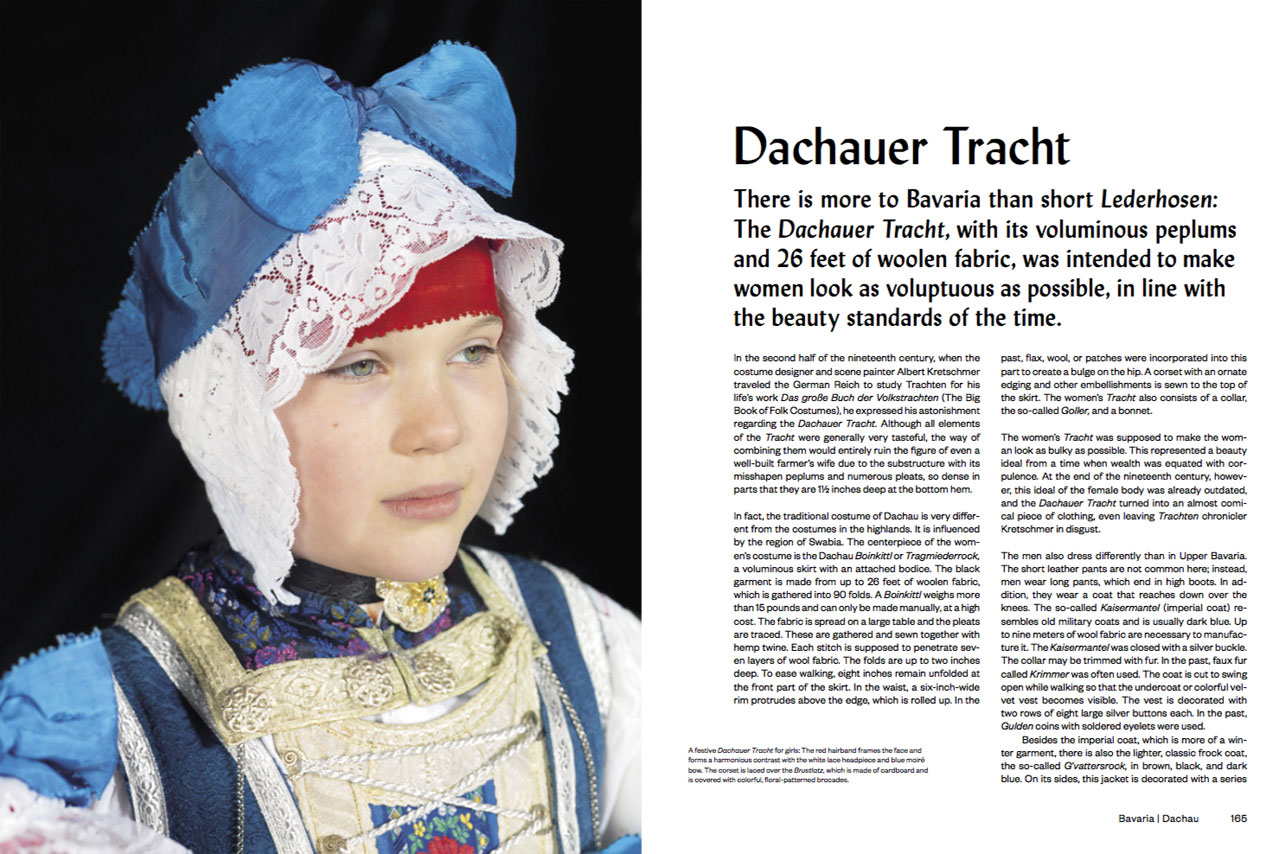
Dachauer Tracht
Bavaria, Dachau
Photo by Gregor Hohenberg
from 'Traditional Couture'
© Gestalten 2015.
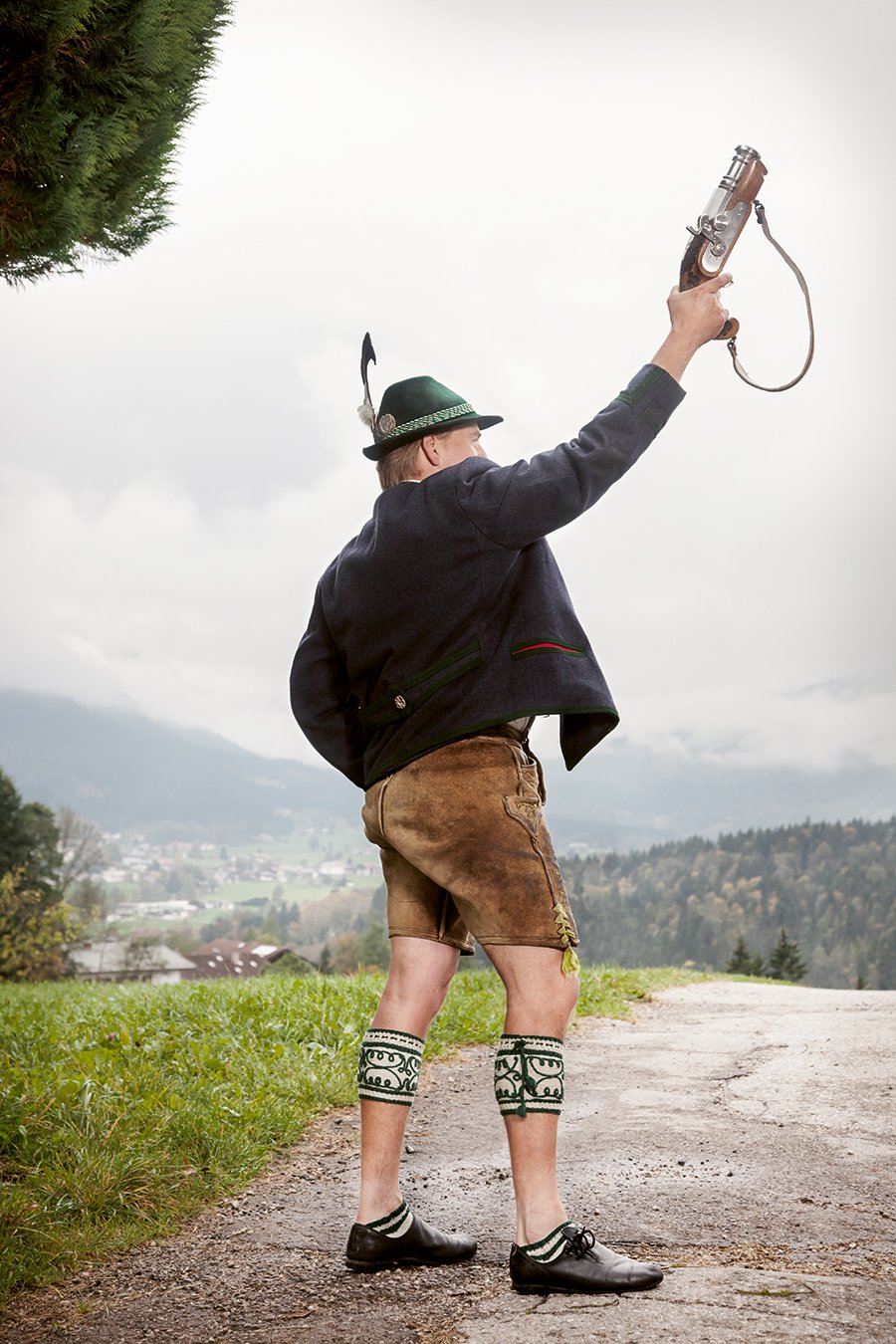
Berchtesgadener Tracht
Bavaria, Berchtesgaden
Photo by Gregor Hohenberg
from 'Traditional Couture'
© Gestalten 2015.
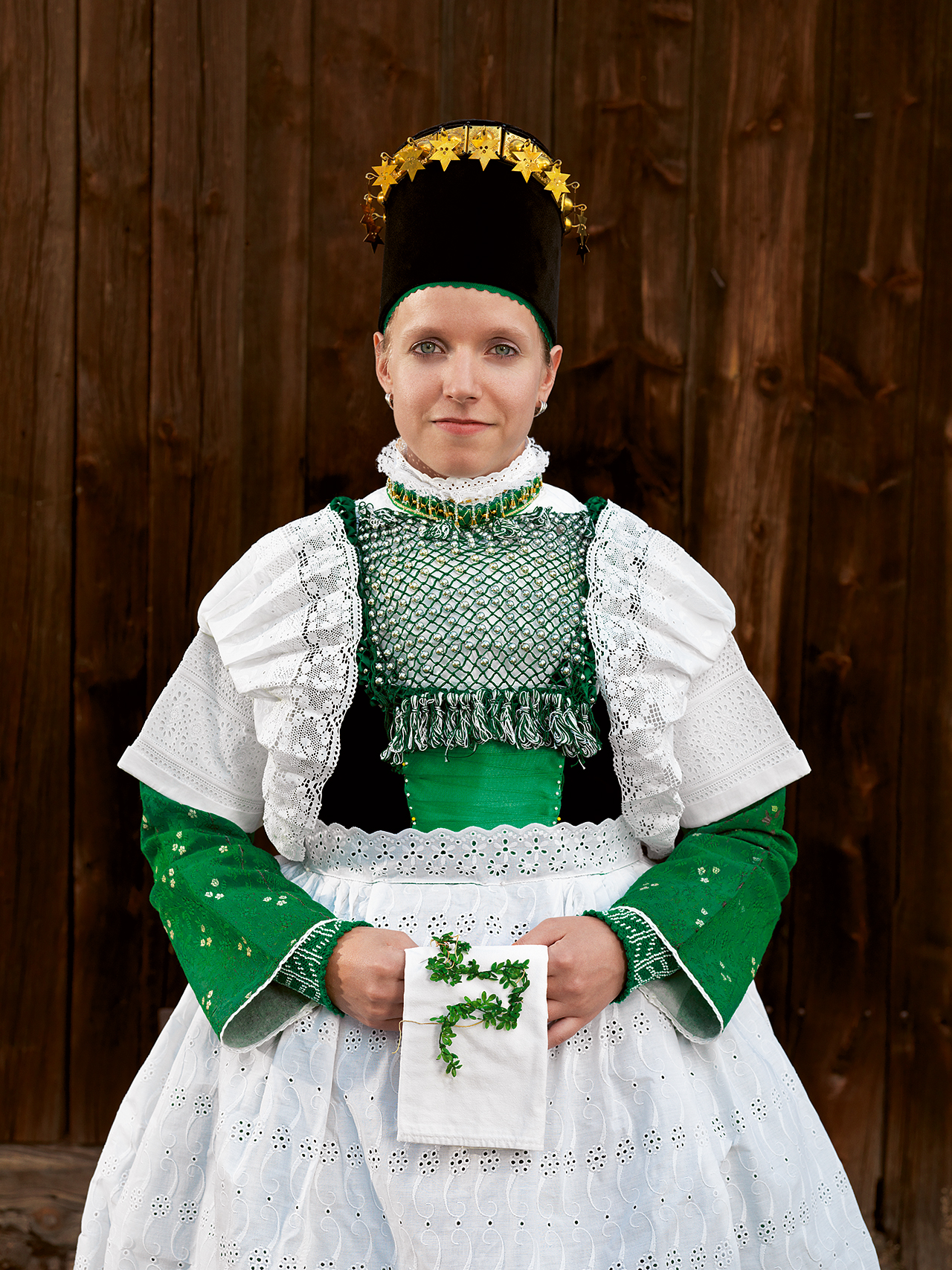
Sorbian Tracht
Saxony, Bröthen
Photo by Gregor Hohenberg
from 'Traditional Couture'
© Gestalten 2015.
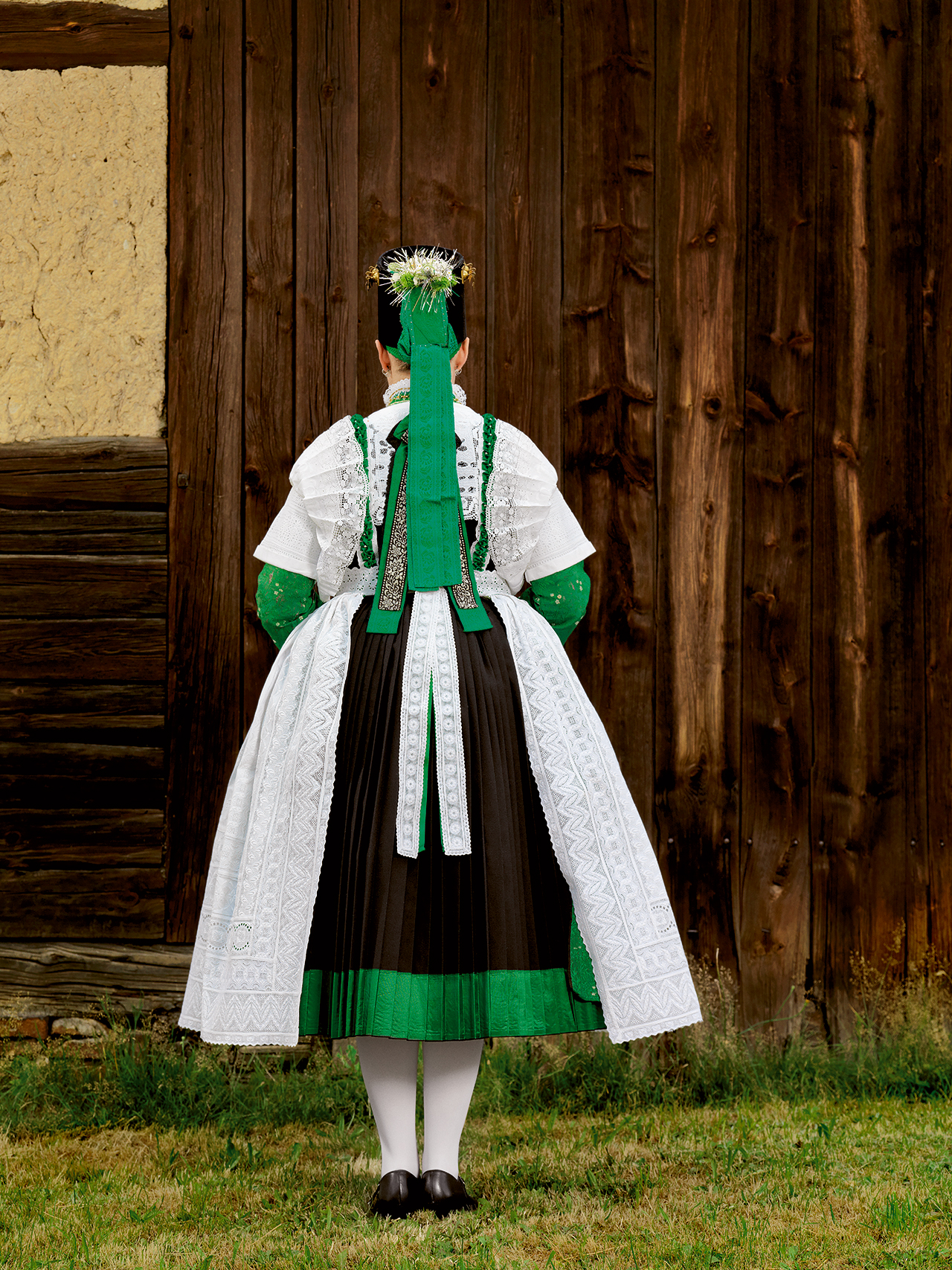
Sorbian Tracht
Saxony, Bröthen
Photo by Gregor Hohenberg
from 'Traditional Couture'
© Gestalten 2015.
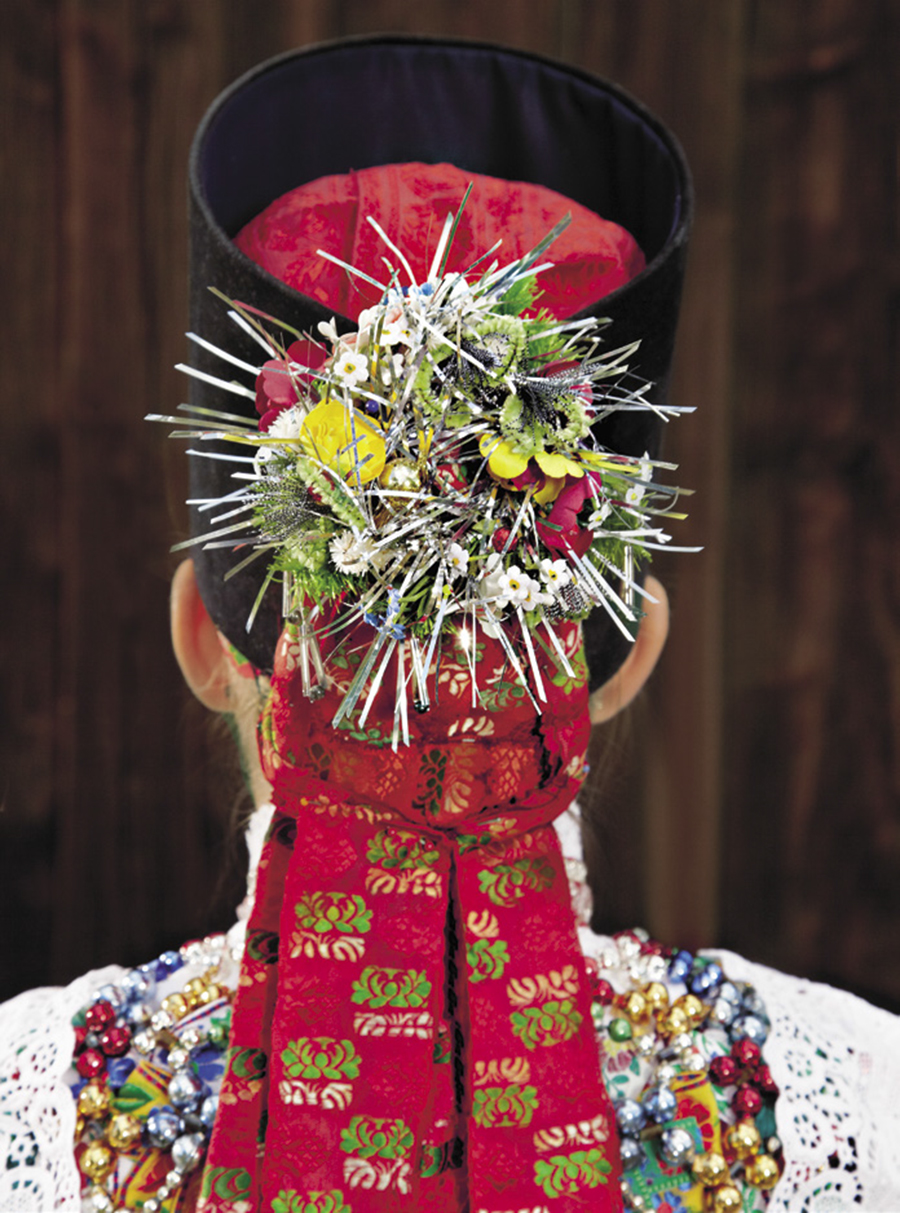
Sorbian Tracht
Saxony, Bröthen
Photo by Gregor Hohenberg
from 'Traditional Couture'
© Gestalten 2015.
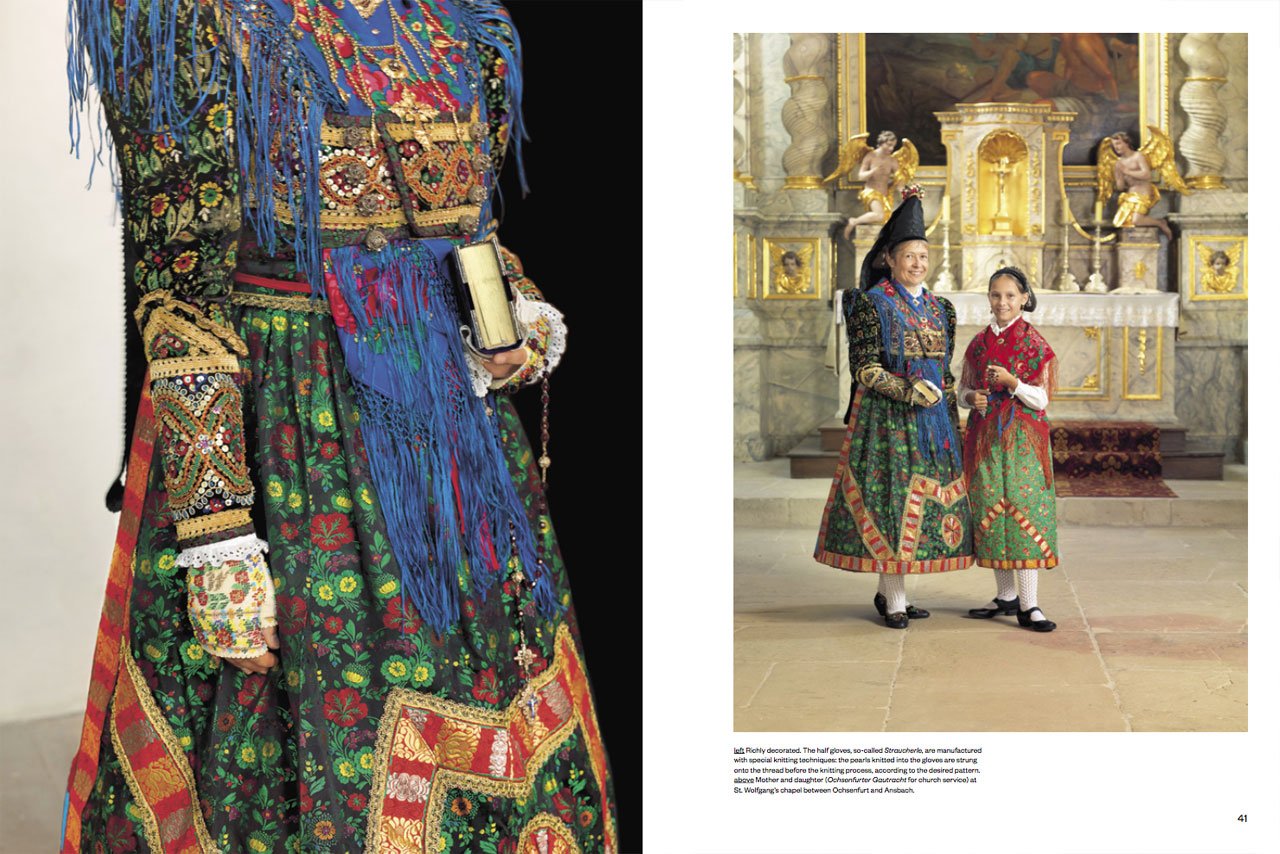
Ochsenfurter Gautracht
Lower Franconia, Ochsenfurt
Photo by Gregor Hohenberg
from 'Traditional Couture'
© Gestalten 2015.
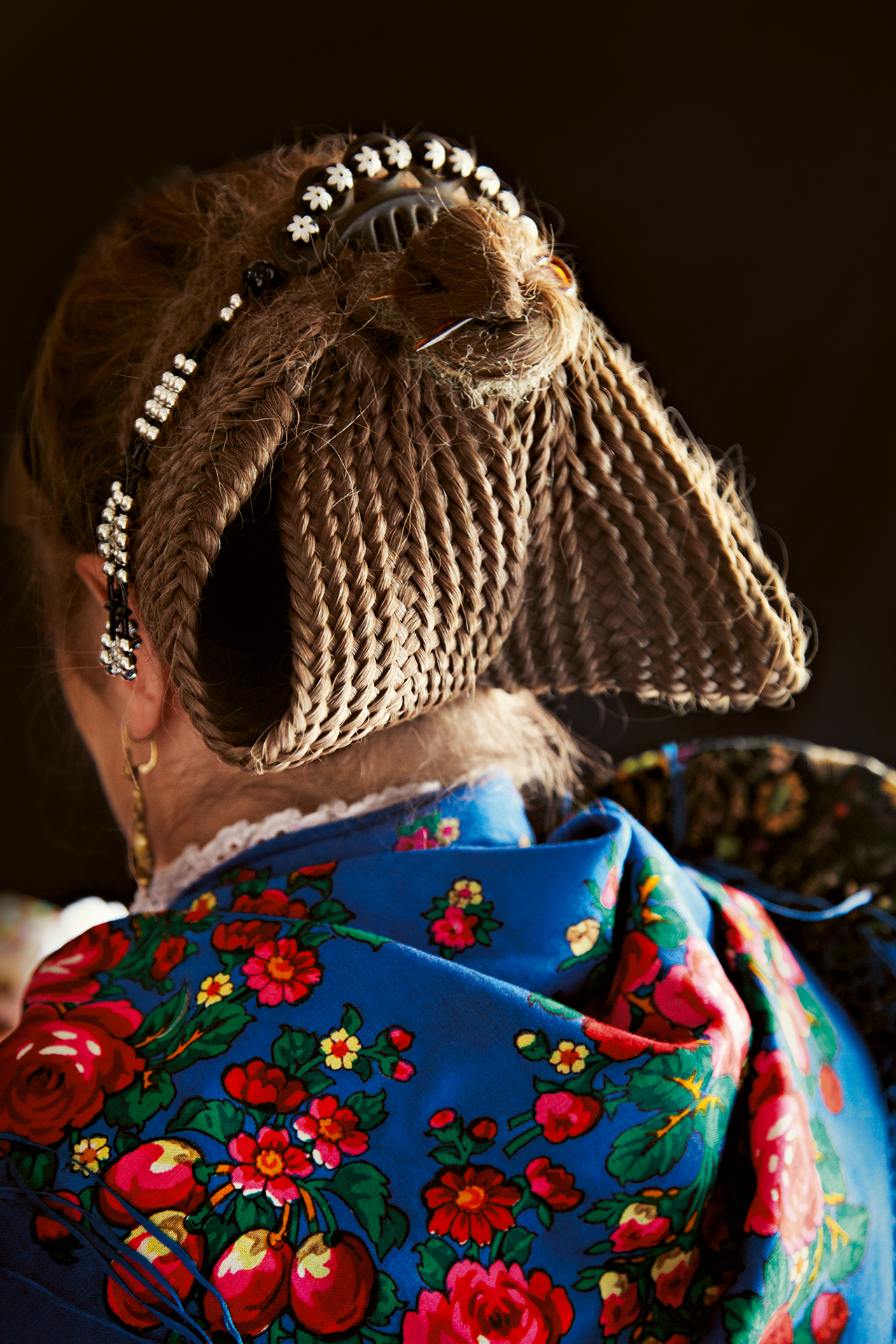
Ochsenfurter Gautracht
Lower Franconia, Ochsenfurt
Photo by Gregor Hohenberg
from 'Traditional Couture'
© Gestalten 2015.















